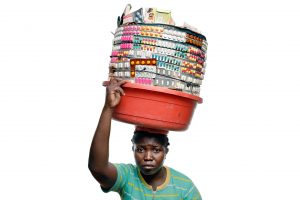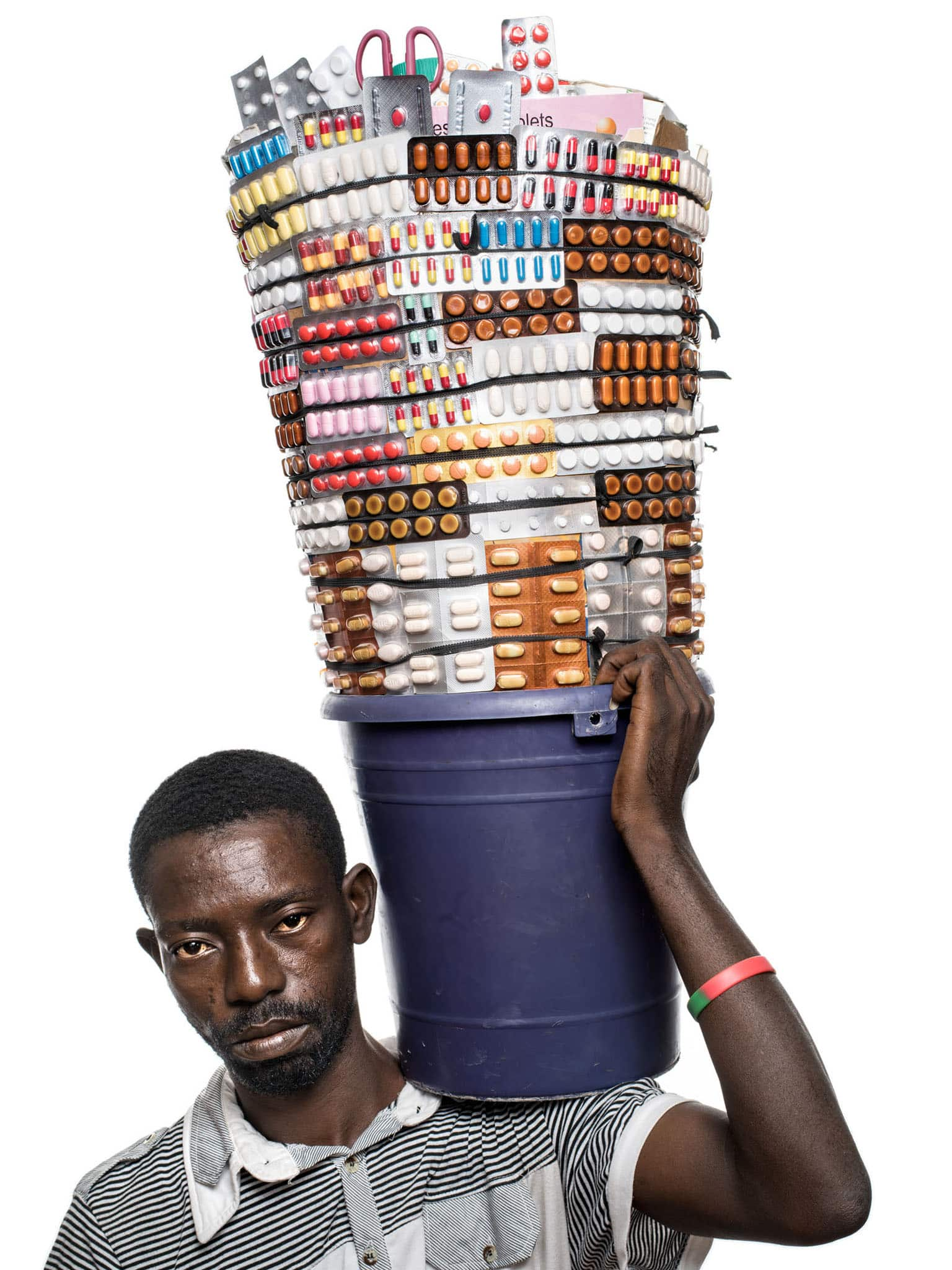
For more than 20 years Bonord has roamed the streets of Port-au-Prince with this tower of treatments, this chemical Babel. But he is not a pharmacist. He is a vendor. Read this report that top health magazines dare not publish
In a little apartment in the Pacot neighborhood of the Haitian capital, merchants like Bonord are lined up to have their portraits taken by Paolo Woods and Gabriele Galimberti. The two photographers—working on a project about medical access in over two dozen countries—have long been fascinated by the city’s wandering druggists.
Street dispensaries, they say, are the main source of medicine for many Haitians. “Pharmacists are an endangered species,” explains Lionel Étienne, a local drug importer. “Medicine is considered an ordinary consumer good.”
For Haitians, untrained vendors are the main source of medicine. For the sellers, it’s a way to survive, reports National Geographic magazine (Buy or subscribe to the National Geographic magazine in Pakistan).
“You see, I put the Ampicillin next to the Tylenol—a packet of pink pills, a packet of blue pills. The colors have to look good together. If my display doesn’t catch the eye, no one will buy anything.”
Aristil Bonord adjusts the blue plastic bucket on his right shoulder as he speaks. Inside it, a steeple of multicolored pills in blister packs rises like a totem. A pair of scissors, used to divvy up the medicine, pokes out at the top. The whole thing is held together with rubber bands.
The portable pharmacies may look like contemporary art installations or candy store displays, says the leading Science and Nature magazine, but they can be as dangerous as Russian roulette. The government’s lack of oversight allows untrained merchants like Bonord to obtain and sell pharmaceutical products: generic medicines from China, expired pills, counterfeit drugs imported from the Dominican Republic.
The activity is technically illegal, but the laws are rarely enforced by the Ministry of Public Health and Population. So the vendors sell anything they can get their hands on, from abortion pills to Viagra knockoffs. Sometimes they give bad advice to their clients. One seller told a teenager to take powerful antibiotics for his acne.
“Every time I see a street vendor, it is like a slap in the face,” mutters the ministry’s pharmacy director, Flaurine Joseph. “They are like time bombs, and we have almost no way to stop them.”
To make these portraits, Woods and Galimberti used an 8 x 10 large-format view camera with film and a medium-format digital camera. A white wall served as the backdrop.
As the vendors waited to be photographed, they eyed their neighbors’ goods, rarely speaking. It was their only respite from a long day in the brutal sun. They were glad for the break but worried that they were losing clients.
Woods and Galimberti say they want to make people aware that access to medicine, taken for granted in developed countries, is a challenge in many places. In Haiti vendors and customers alike have to make do with what they can.
“I chose this profession because times are hard here,” says Bonord. “I want my children to go to school. And everyone needs medicine.”

